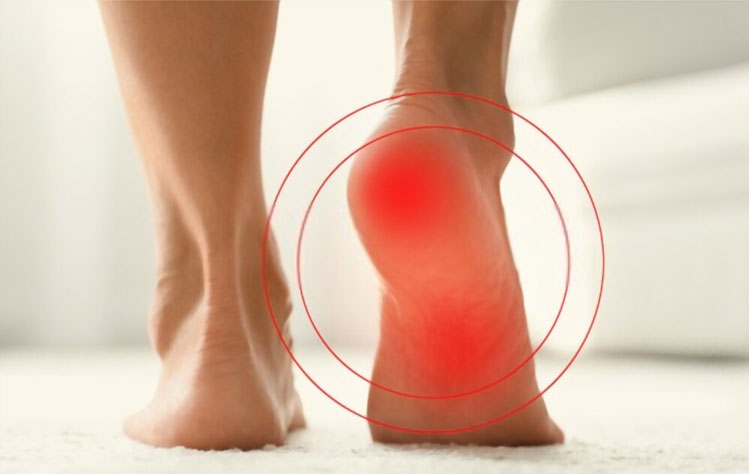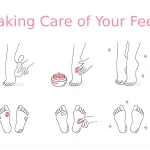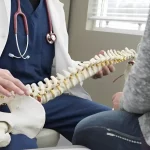Have you ever experienced foot pain after a long day of exploring the city or after a day of lengthy walking? Feeling discomfort in the feet is a fairly common problem, especially among people who travel. Foot pain can be caused by a number of reasons, but in many cases, it is caused by shoes that are not appropriate for the event or environment you are in. This blog post will explore some of the ways to avoid foot pain while traveling.
The Anatomy of the Foot
There are 26 bones in the human foot. These bones are divided into three sections: the hindfoot, the midfoot, and the forefoot. The hindfoot is made up of the talus (ankle bone) and the calcaneus (heel bone). The midfoot consists of the navicular, cuboid, and cuneiform bones. The forefoot contains the metatarsals and phalanges (toes).
The foot is held together by a network of ligaments, tendons, and muscles. The largest tendon in the foot is the Achilles tendon, which attaches the calf muscle to the heel bone. Other important tendons include the posterior tibialis tendon (which attaches the calf muscle to the navicular bone) and the peroneus longus tendon (which attaches the calf muscle to the fibula).
There are also a number of small muscles in the foot that help to stabilize and move the toes. These include intrinsic muscles (such as those in between the toes) and extrinsic muscles (such as those in the calf).
All of these are crucial to the complex movement we know as walking. When some or even just one of these components fails to work properly, others have to pick up the slack. This causes stress on those overworked portions of the foot, often resulting in pain.
Key Causes of Foot Pain
Foot pain is a common issue for travelers, especially those who are on their feet all day. There are a few key causes and symptoms of foot pain that you should be aware of in order to prevent it while traveling.
- Wearing ill-fitting shoes: Wearing shoes that are too tight or too loose can cause a lot of problems for your feet. You may experience poor blood circulation or get painful blisters.
- Standing for long periods of time: If you’re constantly on your feet, whether while sightseeing or standing in line, this can lead to pain in your feet and lower legs.
- Walking on hard surfaces: Walking on concrete or other hard surfaces for extended periods of time can also cause foot pain. Try to find softer surfaces to walk on when possible, or invest in a good pair of comfortable walking shoes matched with seamless socks for women.
Symptoms of Foot Pain
Foot pain can present in a number of ways, including the following:
- Aching or throbbing feet: This is often the first symptom of foot pain. The soreness is felt throughout the foot.
- Swelling: Swelling in the feet is another common symptom, especially if you’ve been standing or walking for long periods of time. You may notice your shoes feeling tighter than usual or that a particular foot area is noticeably larger.
- Shooting or localized pain: This usually indicates trauma to a specific area of the foot, rather than overuse. Common causes include stubbing your toes or experiencing a fracture.
Prevention Methods for Foot Pain While Traveling
There are several prevention methods for foot pain while traveling. Follow these tips to avoid getting sore feet while you travel:
- Wearing comfortable shoes: This is probably the most important preventative measure you can take to avoid foot pain while traveling. Make sure to wear shoes that are comfortable and provide support for your feet. Avoid wearing high heels or flip-flops, as these can lead to heel pain or arch pain.
- Taking breaks: When you’re on the go, it’s important to take breaks and give your feet a rest. If you’re going to be walking a lot, consider bringing along a portable stool or chair so you can take a load off every once in a while.
- Stretching: Before embarking on a long journey, take some time to stretch your legs and feet. This will help prevent cramps and other types of discomfort.
- Moving around: When you’re sitting for long periods of time, make sure to move your feet and legs around frequently. This will help keep the blood flowing and prevent stiffness.
- Buy hosiery or compression socks: Compression socks can help reduce swelling in the feet and improve circulation. They’re especially helpful if you have diabetes or other conditions that cause poor circulation in the feet.
Treatment Options for Foot Pain
There are many different ways to treat foot pain, depending on the underlying cause. For example, if you have plantar fasciitis, your doctor may recommend stretching exercises, orthotic devices, or corticosteroid injections. If you have arthritis, they may recommend weight loss, exercise, or medication.
Surgery is generally reserved for more severe cases of foot pain that haven’t responded to other treatment options. For example, you may need surgery to correct a structural problem with your feet or to remove damaged tissue.
Medications can also be helpful in treating foot pain. Over-the-counter options include ibuprofen and acetaminophen. Your doctor may also prescribe stronger medication if your pain is severe.
If you’re dealing with foot pain, talk to your doctor about the best treatment options for you.
Being on foot is one of the best ways to discover everything a new city has to offer, but it does have its share of inconveniences. Take these tips to heart to reduce the hassles of foot pain and make the most of your adventure!









